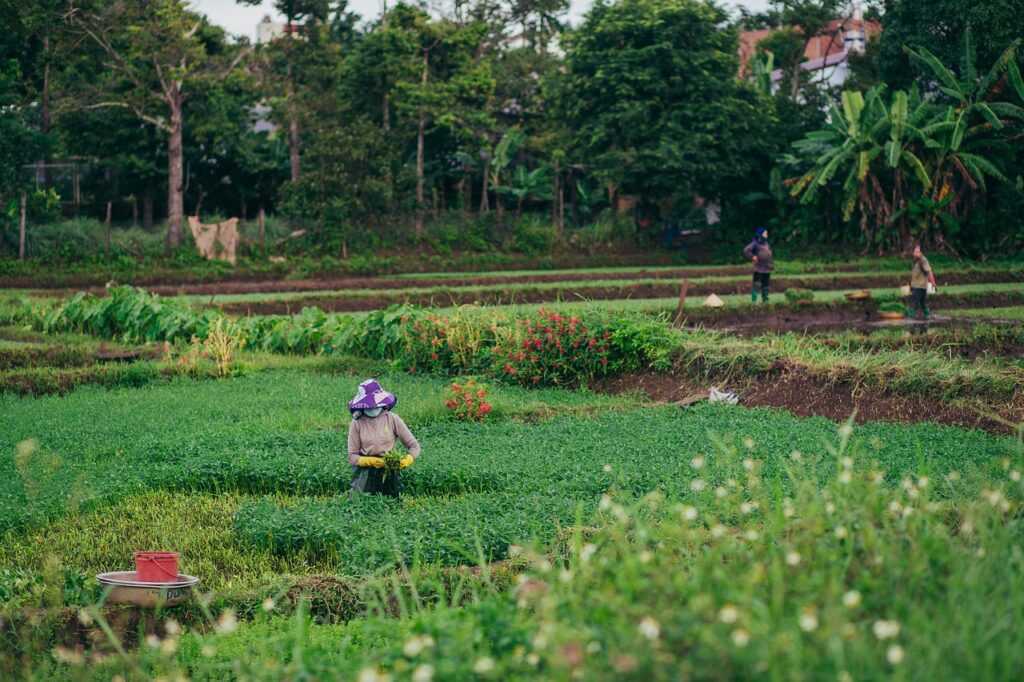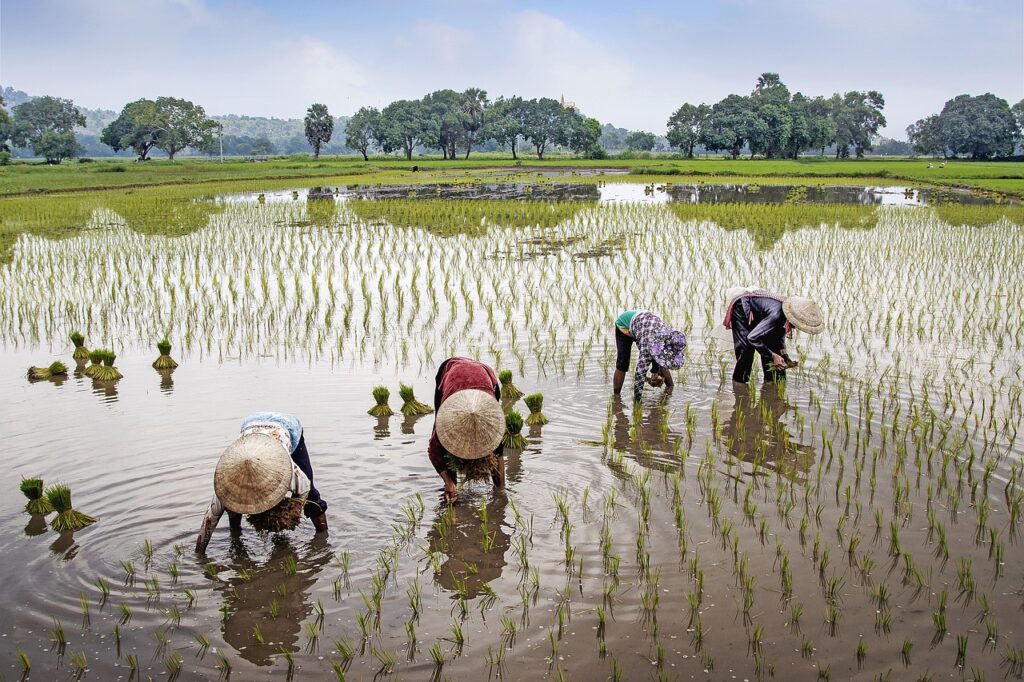Subsidies and Grants for Farmers: A Comprehensive Analysis
Subsidies and grants play a pivotal role in the agricultural sector, providing financial support to farmers and fostering stability, innovation, and sustainability. These financial aids help address the various challenges faced by farmers, such as market volatility, high production costs, and environmental concerns. This comprehensive analysis delves into the principles, types, impacts, and future directions of subsidies and grants for farmers, highlighting their significance in the agricultural landscape.
Principles and Objectives of Subsidies and Grants
Subsidies and grants are designed with specific principles and objectives to support the agricultural sector. These include:
- Economic Stability
Ensuring that farmers have a stable income and can withstand market fluctuations.
- Goals: Mitigate the risks associated with price volatility, stabilize farm income, and ensure the economic viability of farming operations.
- Strategies: Direct payments, price supports, and crop insurance programs.
- Food Security
Ensuring a stable and sufficient supply of food to meet the nutritional needs of the population.
- Goals: Increase agricultural production, enhance food distribution systems, and maintain food reserves.
- Strategies: Production subsidies, research and development (R&D) grants, and support for infrastructure development.
- Environmental Sustainability
Promoting agricultural practices that protect natural resources and reduce environmental impact.
- Goals: Enhance soil health, conserve water, and reduce greenhouse gas emissions.
- Strategies: Environmental grants, conservation programs, and incentives for sustainable farming practices.
- Innovation and Competitiveness
Encouraging innovation and improving the competitiveness of the agricultural sector.
- Goals: Develop new technologies, improve farming practices, and enhance productivity.
- Strategies: R&D grants, technology adoption subsidies, and training programs.
- Rural Development
Supporting the development of rural areas to improve the quality of life for rural populations.
- Goals: Create employment opportunities, improve infrastructure, and provide access to education and healthcare.
- Strategies: Rural development grants, investment in rural infrastructure, and support for smallholder farmers.
Types of Subsidies and Grants
Subsidies and grants for farmers can be categorized into several types, each with specific tools and mechanisms:
- Direct Payments
Financial assistance provided directly to farmers to support their income and reduce production costs.
- Types: Income support payments, decoupled payments, and counter-cyclical payments.
- Impact: Helps stabilize farm income, and encourages production of certain crops, but can distort market prices and lead to overproduction.
- Price Supports
Mechanisms that stabilize market prices for agricultural products, ensuring farmers receive a minimum price.
- Types: Minimum support prices (MSPs), buffer stocks, and price guarantee schemes.
- Impact: Protects farmers from price volatility, and ensures fair returns, but can lead to market distortions and fiscal burdens.
- Crop Insurance
Insurance programs that protect farmers from losses due to natural disasters, pests, and diseases.
- Types: Multi-peril crop insurance, weather-indexed insurance, and revenue insurance.
- Impact: Reduces financial risk, and encourages investment in farming, but requires substantial government subsidies.
- Environmental Grants
Financial incentives are provided to farmers to adopt environmentally sustainable practices.
- Types: Conservation payments, payments for ecosystem services, and agri-environment schemes.
- Impact: Promotes sustainable farming, and improves environmental health, but can increase compliance costs for farmers.
- R&D Grants
Funding is provided for agricultural research and development to drive innovation and improve productivity.
- Types: Grants for research institutions, innovation grants, and extension services.
- Impact: Supports technological advancements, and enhances productivity, but benefits may take time to materialize and require widespread adoption.
- Rural Development Grants
Financial support for projects that improve the infrastructure and services in rural areas.
- Types: Grants for infrastructure development, education and training programs, and rural business support.
- Impact: Enhances the quality of life in rural areas, and creates jobs, but requires significant investment and long-term commitment.
Impact of Subsidies and Grants
The impact of subsidies and grants can be far-reaching, affecting various aspects of the agricultural sector and society. Key impacts include:
- Economic Impact
Subsidies and grants have significant economic implications for farmers, consumers, and the broader economy.
- Farmers: Financial support helps stabilize farm income and reduce the risk associated with farming. However, subsidies can also lead to market distortions and dependence on government support.
- Consumers: Price supports and subsidies can impact food prices, affecting affordability and accessibility. Policies that promote food security ensure a stable supply of affordable food.
- Economy: Subsidies and grants contribute to economic growth by promoting productivity and innovation in the agricultural sector. Rural development programs stimulate economic activity in rural areas, creating jobs and improving infrastructure.
- Environmental Impact
Subsidies and grants play a crucial role in promoting environmental sustainability and addressing the environmental challenges associated with farming.
- Positive Impact: Environmental grants and conservation programs promote sustainable farming practices, such as soil conservation, water management, and organic farming, enhancing soil health and reducing greenhouse gas emissions.
- Negative Impact: Subsidies for high-input farming practices, such as the overuse of fertilizers and pesticides, can lead to environmental degradation, including soil erosion, water pollution, and loss of biodiversity.
- Social Impact
Subsidies and grants have important social implications, particularly for rural communities and marginalized groups.
- Rural Communities: Rural development grants improve the quality of life by providing better infrastructure, education, and healthcare. These programs also create employment opportunities and reduce rural poverty.
- Marginalized Groups: Policies that promote social equity, such as targeted support for women and minority farmers, help reduce disparities and promote social inclusion.
- Global Impact
Subsidies and grants can have global implications, particularly through their impact on international trade and food security.
- Trade: Trade policies and subsidies influence global agricultural markets, affecting prices and the availability of agricultural products. Protectionist policies can lead to trade disputes and impact global food security.
- Food Security: Policies that promote food security at the national level contribute to global food security by ensuring a stable supply of food. However, policies that lead to overproduction and export restrictions can disrupt global markets and affect food availability in other countries.

Case Studies in Subsidies and Grants
Examining specific case studies can provide valuable insights into the impact of subsidies and grants:
- The European Union’s Common Agricultural Policy (CAP)
The CAP is one of the most comprehensive and influential agricultural policies in the world, providing significant financial support to EU farmers.
- Impact: The CAP has stabilized farm incomes and promoted rural development. However, it has also faced criticism for contributing to overproduction, market distortions, and environmental degradation.
- The United States Farm Bill
The Farm Bill is a major piece of legislation that governs agricultural and food policy in the United States, including various subsidy and grant programs.
- Impact: The Farm Bill has provided vital support to American farmers, promoting productivity and innovation. However, it has also been criticized for disproportionately benefiting large agribusinesses and contributing to environmental issues.
- India’s Minimum Support Price (MSP) Scheme
India’s MSP scheme provides price support for staple crops, ensuring that farmers receive a minimum price for their produce.
- Impact: The MSP scheme has helped increase food production and improve rural livelihoods. However, it has also led to market distortions, fiscal burdens, and environmental concerns such as groundwater depletion.
- Brazil’s Rural Development Programs
Brazil’s rural development programs focus on promoting agricultural exports, supporting family farming, and addressing environmental sustainability.
- Impact: Brazil has become a major global exporter of agricultural products, contributing to economic growth. However, there are ongoing challenges related to deforestation, land conflicts, and social equity.
Future Directions in Subsidies and Grants
The future of subsidies and grants will be shaped by evolving challenges and opportunities. Key areas of focus include:
- Sustainable Agriculture
Promoting sustainable agricultural practices will be crucial to address environmental challenges and ensure long-term food security.
- Approach: Implementing policies that incentivize sustainable practices, such as agroecology, conservation agriculture, and organic farming.
- Impact: Enhances environmental sustainability, improves resilience to climate change, and supports biodiversity.
- Digital Agriculture
Leveraging digital technologies can transform agriculture, improving productivity, efficiency, and sustainability.
- Approach: Supporting the adoption of precision agriculture, data analytics, and digital platforms for market access and information sharing.
- Impact: Increases productivity, reduces resource use, and enhances decision-making for farmers.
- Inclusive Development
Ensuring that subsidies and grants promote social equity and support marginalized groups will be essential for inclusive development.
- Approach: Implementing targeted support programs, land reform initiatives, and access to credit and markets for smallholder farmers, women, and minority groups.
- Impact: Reduces disparities, promotes social inclusion, and improves livelihoods for vulnerable populations.
- Global Collaboration
International collaboration will be crucial to address global challenges such as food security, climate change, and trade.
- Approach: Strengthening global partnerships, harmonizing standards, and promoting fair trade practices.
- Impact: Enhances global food security, supports sustainable development, and fosters economic cooperation.
Conclusion
Subsidies and grants for farmers play a vital role in shaping the agricultural sector and addressing the complex challenges it faces. By promoting economic stability, food security, environmental sustainability, innovation, and rural development, these financial aids contribute to a more sustainable and resilient agricultural system. As the world continues to evolve, it will be essential to adapt and innovate subsidies and grants to meet emerging challenges and seize new opportunities. Through thoughtful and inclusive policy-making, the agricultural sector can continue to thrive and support the well-being of people and the planet.


